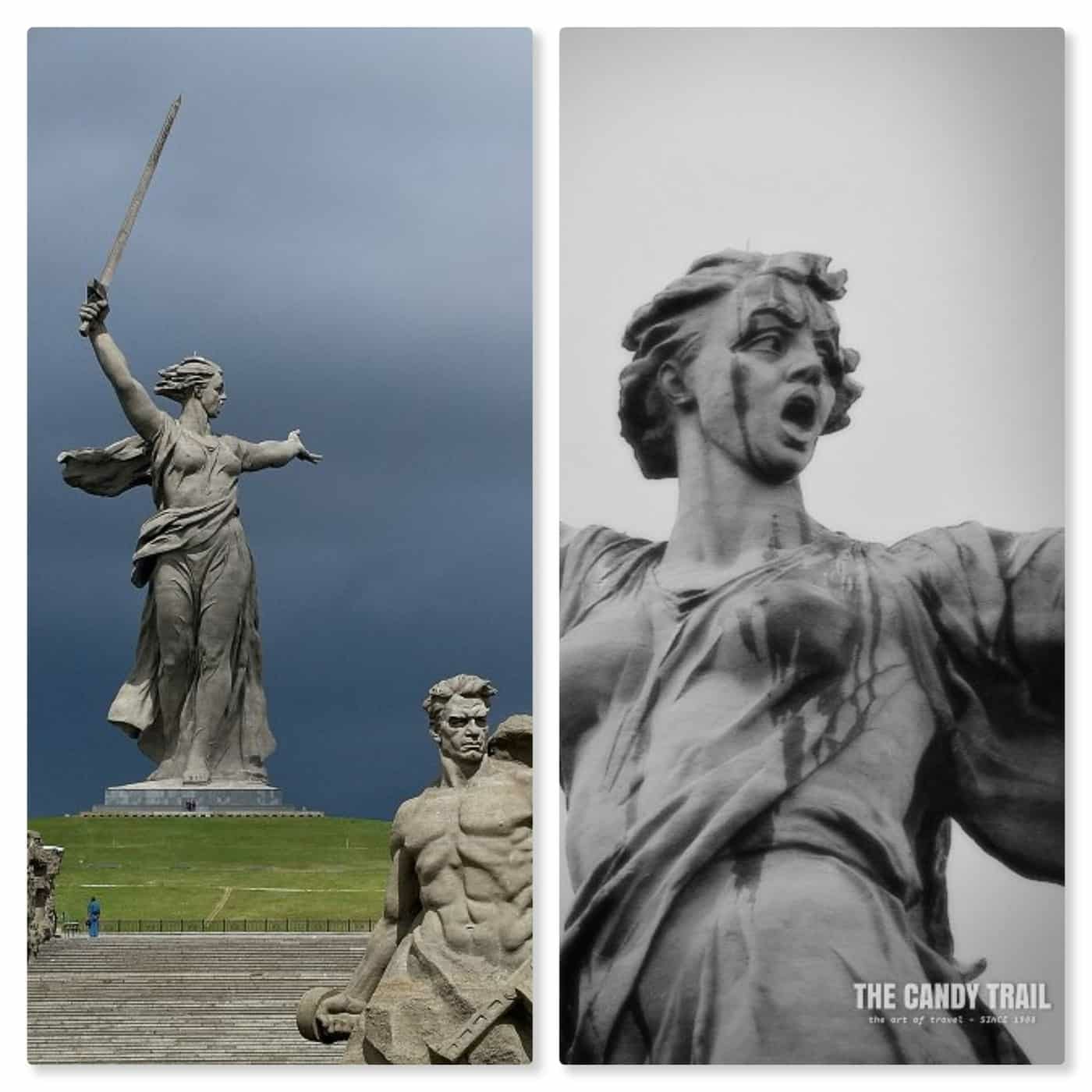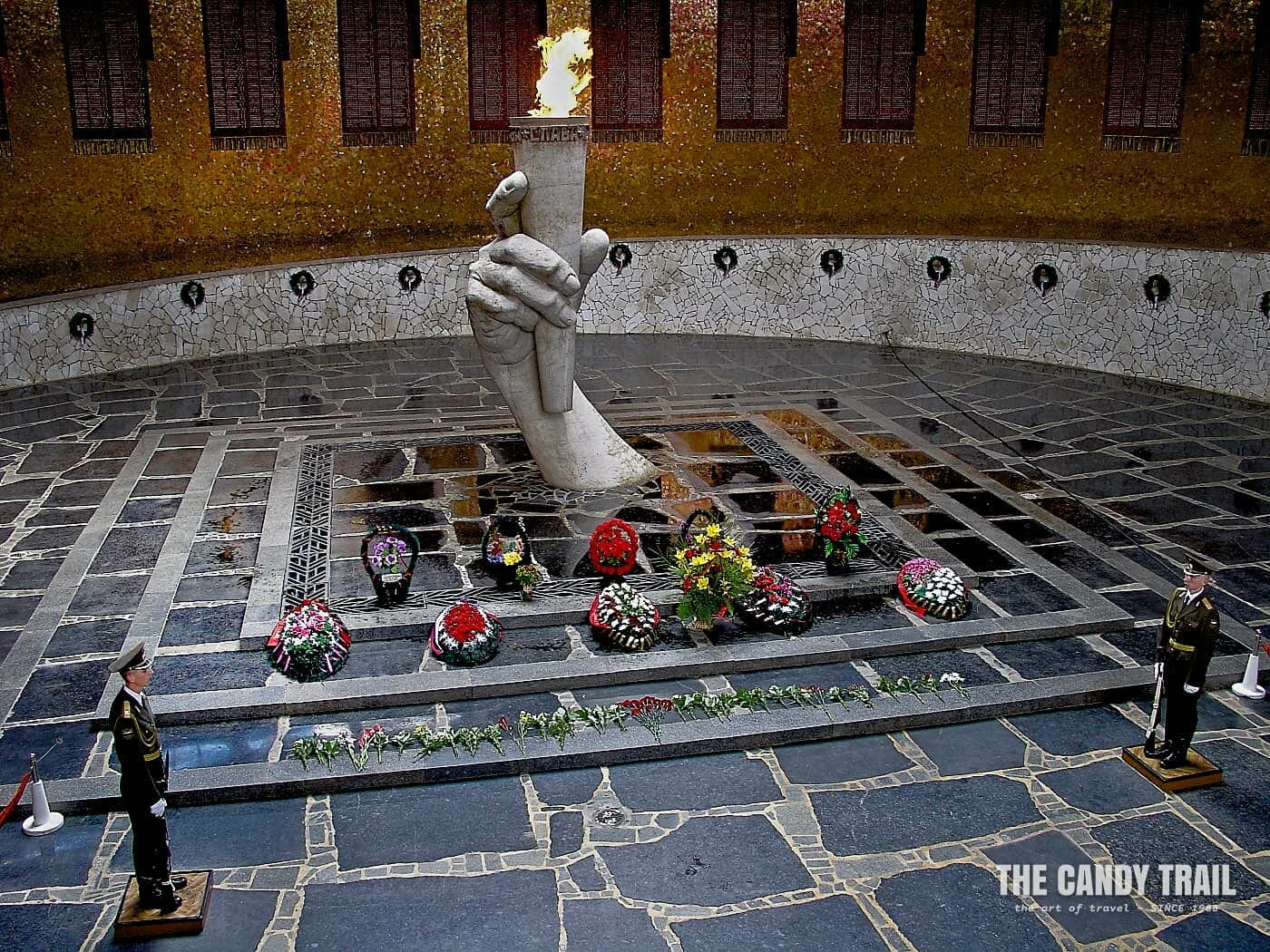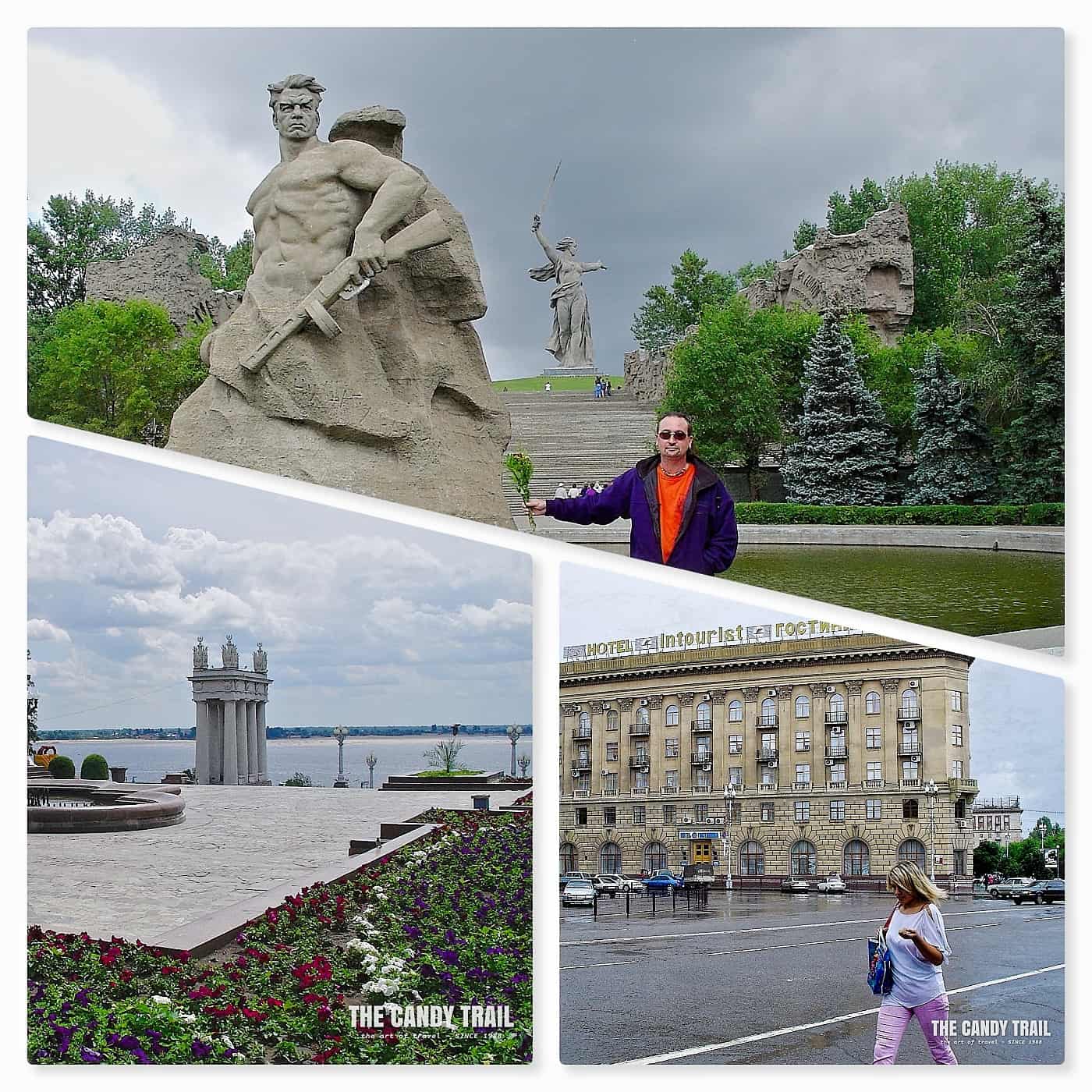The last months at Stalingrad saw trapped German soldiers living like rats, fighting like devils, dying like flies.
For it was at Stalingrad – in the Russian winter of 1943 – that Hitler’s Germany suffered its biggest defeat, turning the tide of War World Two against the Nazis.
YAY.

Stalingrad War Museum is the first visit
The museum was what you would expect—weapons, vehicles, uniforms, but best of all: a gripping 360-degree panorama of battle as seen from Hill 101.

Stalingrad Battle sites include “The Mill”
Chunks of devastation – including ‘The Mill’, a ruined brick building – have been left as monuments to the five months, one week and three days of fighting.
Stalingrad left 1,200,000 dead (plus Italian, Romanian and Croatian troops fighting with the Germans and also thousands of Russian civilians).
It’s estimated the entire Stalingrad campaign caused 2 million casualties (including wounded, sick and missing).

Nazi Germany suffered total defeat at Stalingrad
Soviet leader Joseph Stalin would not tolerate a defeat at his namesake city on the Volga River, and Hitler wasn’t in the mood to back down, either.
Secretly, the Russians had been massing for a winter offensive (like they’d done in winter 1942 outside Moscow, when the Nazis had their first real setback since invading Russia in 1941).

Why did Germany lose the Battle for Stalingrad
One winter later and the German 6th Army was now encircled and trapped by Russian armies, surrounded at Stalingrad in a ‘cauldron’ only 60-by-30 kilometers.
Cut-off from other German armies in Russia, the 6th Army had to fend for itself, for months, with a promise of relief with a counter offensive … but that failed.
Fighting, existing amid intense cold, the German 6th Army also faced a lack of supplies – airdrops of food, ammunition, petrol, medicines, etc, couldn’t meet the needs of 300,000 men and their equipment.

Stalingrad encirclement trap
Earlier, at the initial stages of the Stalingrad encirclement, Hitler had refused his field commander’s initiative to stage a break-out; rather, he ordered them to stand and hold a defensive line.
Hermann Goering, the German Air Force commander, had insisted that his Luftwaffe could supply the encircled 6th Army from the air.
But this was all bluster, as aircraft and crews were being lost more than replaced and the harsh weather restricted resupply opportunities.

Impossible for the 6th Army at Stalingrad
Beyond the endless battles and bombardments, starvation, illness, lice and freezing temperatures took an even greater toll on German forces.
Starving men ate supply horses and stray dogs; many had only a few slices of bread daily.
Starved of food and sleep, enduring temperatures at minus 30 Celsius and endless combat stress, the German troops evolved into demoralized, half-frozen zombies.
The Russians had the advantage.
More men, weaponry, and seemingly endless willpower and tenacity to defend their homeland.
And they knew the invaders would suffer-dearly during the bitter Russian winter (as had Napoleon’s Grand Army 130 years earlier). Winter killed more enemy that bullets.
Eventually, the 6th Army commander, Paulus, surrendered his remaining 91,000 men (of which about only 5000 returned from Siberian prison camps years later).
Hitler exploded.
In his eyes, it was a fight to the last man; surrender was never an option.
“The Axis suffered 647,300 – 968,374 total casualties (killed, wounded or captured) among all branches of the German armed forces and its allies.” (NOTE: These numbers vary, depending on how scholars include different aspects of the campaign).
The Russians, “according to archival figures, suffered 1,129,619 total casualties; 478,741 personnel killed or missing, and 650,878 wounded or sick … 955 Soviet civilians died in Stalingrad and its suburbs.”
https://en.wikipedia.org/wiki/Battle_of_Stalingrad
The Battle of Stalingrad site today is in Volgograd
They renamed the city in 1961.
In south-western Russia (near Ukraine), many statues mark vital battle sites, headquarters, shifting front lines across this tranquil city on the Volga River.
Today, bathers sun themselves on the sandy shores where shells once fell.

Battle of Stalingrad Statue and Mamayev Kurgan
They opened the war memorial complex in 1967.
Standing on Mamayev Kurgan (Hill 101) is the imposing Mother Russia statue commemorating the Soviet victory and sacrifice.
Her raised sword and savage outcry, short sweeping hair, long dress and large breasts – defying enemies as she gazes west.
The statue stands about 70 meters on this small hill overlooking the city and thus; it was the site of brutally contested fighting.

Visiting the Stalingrad War Memorial
The walkway avenue is a park of war monuments and audio recordings of dive bombers and battle sounds as you walk thru walls of ‘sculptured war scene’ ruins and ponds.
Amid this park is an eternal flame tomb within a dome playing sombre classical music—tear jerking stuff—with statue-straight guards and flowered wreaths surrounded by glistering-gold mosaic walls and lists of names.
I took a bunch of flowers – bought from an old lady – and placed it here, as the changing of the guards took place.
Meantime, the weather over the space of two hours flipped between sweltering or chilly winds or rainstorms; water weeping down Mother Russia’s face as the sun shone across the battlefields of Stalingrad’s fallen.

Travels in Russia – 2005


